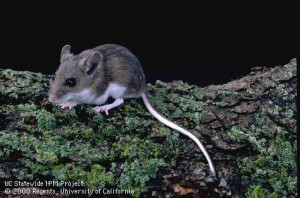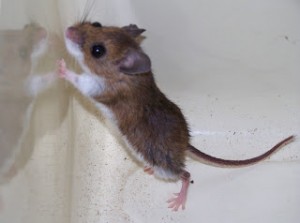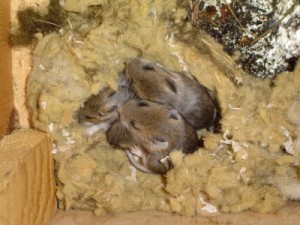Minnesota Wild Animal Management | Mice Problem MN
As the weather gets cold in Minnesota, you may think that pests have either frozen with the ground or are hibernating far away from your home. Think again! That is just not the case. Our homes are the perfect refuge from the cold winter ahead. During the winter months, pests work diligently on finding ways into your warm home. Fall and winter are an especially busy time of year for encounters with these less than welcome house guests.
Many homeowners notice signs of a mouse or rodent in their home and assume it’s no big deal or that it may be just the one. However, a female mouse can have as many as 12 babies every three weeks. A small infestation can quickly grow into a huge mice problem. In my opinion, even one mouse in my house is one too many!
Very often homeowners hear rodents at night when the pests venture out from their nesting spots, often waking them up. According to the experts, it’s no wonder these pests keep homeowners awake – one pair of mice has the potential to produce as many as 200 offspring in only four months.
While rodents are unwelcome house guests for any homeowner, the real concern is that these pests can cause property damage and spread disease. Rodents such as mice serve as vectors of many common diseases and pose serious health threats – transmitting disease-causing organisms through urine, droppings and bites. Rodents have been known to bite, most commonly sleeping babies, inquisitive children or the bedridden elderly.
Rats can carry more than 40 disease-causing viruses and bacteria, including Hantavirus and salmonella. The house mouse is the primary carrier of an illness called Lymphocytic Choriomeningitis Virus, or LCMV, which causes symptoms such as headache, fever, chills and muscle aches in people with poor immune systems.
How is Hantavirus or Arenavirus transmitted to people?
A great deal of study on these diseases has been done in the past few years, and it is believed that HPS and Arenavirus are transmitted to people in one principal way – through inhalation of “aerosolized” dust or droplets containing rodent feces or urine that are infected with the virus. The rodent excretes the virus with its waste material, and as the surfaces dry the virus remains in the dust on the surface. If this is disturbed in some way and becomes airborne it is possible for us to inhale the pathogens, and they rest in our lungs where they begin their work.
It also is possible for humans to become infected by direct contact with infected rodents, either by contact with an open break in the skin, a rodent bite, or touching the mouth with fingers or objects that may be carrying the virus.
However, hantavirus and arenavirus apparently are NOT transmitted in any of the following ways:
- NOT from person to person by touching, kissing, etc.
- NOT transmitted in blood transfusions
- NOT transmitted by other kinds of animals than the specific rodent hosts

Adult deer mouse. Note the large ears and eyes and the white underside of the body and tail—all distinguishing characteristics between the deer mouse and house mouse.
Normally, it is felt that a scenario for infection would go somewhat like this. Infected rodents are living within a structure, and in the course of that lifestyle they produce a great deal of fecal matter and urine, and are not particularly discriminating about where it lands. Mice tend to urinate as they are walking. Rats may produce up to 25,000 droppings each year. The surface then dries, but the viruses that were deposited there may be alive and well for a very long time, as they encapsulate themselves for survival through harsh times. If this happens to be a cabin in a rural area, as often happens, Deer Mice may move in in large numbers when the owners of the cabin are not there, perhaps for the entire winter.
Once people come back to reoccupy the structure they notice all the rodent droppings laying around, and instinctively grab the broom or vacuum cleaner to remove the mess. This is the worst thing to do, for by sweeping or vacuuming you may quickly create dust that carries the virus into your lungs. In the Four Corners region of the southwest United States, where the initial outbreak of Sin Nombre Virus occurred, the weather had been drier than usual, creating dustier conditions. Human activity in and around the dens of Deer Mice then exposed these people to higher than normal levels of contaminated dust.
How do I avoid exposure to Hantavirus or Arenavirus?
 Since the sole route of these pathogens into humans is by way of infected mice and their waste products, avoiding the diseases consists of two primary measures:
Since the sole route of these pathogens into humans is by way of infected mice and their waste products, avoiding the diseases consists of two primary measures:
- Eliminating rodents from your environment
- Properly cleaning up the areas that rodents have inhabited
It is his recommendation that you never directly contact rodents, pest birds, or their unsanitary conditions. If you trap rodents you should wear gloves and other protective clothing when removing them, as well as while cleaning up after them. It has long been known that birds, bats, and rodents pass disease agents in their urine and feces. Over 40 diseases are associated with pigeons, starlings, and sparrows, many of them respiratory problems that are contracted from inhaling infected fecal dust.

While the back and sides of the deer mouse can vary in shades of gray and brown, it should have a white belly. Note the bicolored tail of the deer mouse – the house mouse has a mono-color tail.
Notice it is dark above, white below
So, the first step is to keep rodents from living in your structures or on your property. Even though they are a part of Nature, and it may be cute to see them, we truly may be competing with them for our health. Wood Rats, the vectors of Arenavirus, generally stay outdoors, and their nests may be large, visible piles of sticks and debris with the living quarters inside. These should be eliminated, while wearing safety clothing that will be discussed in a few minutes. Deer Mice also are generally outdoor rodents, but when buildings are left unoccupied for long periods they may move in. Even our “domestic” rodents – the House Mouse, Norway Rat, and Roof Rat – while not associated with hantavirus, can and do carry disease pathogens in their waste products. For example, a serious condition called Lymphocytic choriomeningitis is a viral disease spread by the House Mouse.
Rodent exclusion also is a vital step, for once the rodents are eliminated from your home or office you would like them to stay out, rather than repeating the process.
Should you be camping or enjoying other activities in the outdoors these same general guidelines would be appropriate. While they are downright cute, burrowing chipmunks and squirrels and other rodents are not the best of companions. Put away foods at night, keep tents sealed while you are away from them or while sleeping, and don’t leave tidbits around just to attract the cute little things. Potato Chips probably aren’t the healthiest things for the critters anyhow.
How should I clean up an area contaminated by rodents?
Your main considerations, in avoiding nasty diseases spread by rodents, is to avoid touching surfaces with your bare skin, and to avoid inhaling airborne dust from the surfaces. Again, you may want to consider calling a licensed professional from the pest control industry in your area. Generally, you can then have someone evaluate your situation who is trained in the control of mice and rodents, has received information on proper cleanup of potentially contaminated environments, and already has and wears the appropriate protective equipment.
Should you choose to tackle the cleanup yourself the following steps have been recommended by many of the knowledgeable people in the industry and from universities.
- Ventilate the affected area the night before by opening doors and windows where possible.
- Wear rubber gloves, safety glasses, and at least a properly-fitting dust mask. Most appropriate is a respiratory protective device with a “HEPA” filter, capable of filtering out even the tiny, tiny viruses.
- Moisten the area, nests, contaminated traps, or dead rodents or their droppings with a spray solution of disinfectant. Follow the instructions on the container of disinfectant – such things as Lysol or bleach. The National Pest Management Association’s suggestion would be about 1 1/2 cups of household bleach in 1 gallon of water. If the contaminated area happens to be furniture and it is surfaces that can be cleaned, then they should be professionally cleaned. If it was furniture with nests inside it you should consider getting rid of the items.
- DO NOT VACUUM to remove rodent droppings.
- Captured rodents should be placed in a plastic bag without touching them. Use the bag like a glove to seal it inside for disposal. Any traps and the area around it should be disinfected.
- Wash your gloves in disinfectant prior to removing them, and then wash your hands thoroughly.
This is some basic information about Hantavirus and Arenavirus, and mice and rodent control in general. There is a great deal of information available on the Internet, and good, factual, accurate information can be found on sites provided by The Centers for Disease Control (CDC), State or County Health Departments, and the medical community.
Wild Animal Management
If you have done everything you can and still have mice, deer mice or rodents in your home, it is important to contact a professional. Mice can colonize under concrete and porches, in your attic and other hard to reach places. A professional exterminator can remove the mice from your Minnesota home as well repair any of the damage they may have caused. They will have the tools and techniques to rid you of these unwanted pests once and for all.
Find out more about Lymphocytic Choriomeningitis (LCMV)
A checklist of precautions is provided by the Centers for Disease Control and Prevention, providing tips for sealing the home to keep rodents out, using traps to eliminate existing rodents, and maintaining a clean, healthy home. Prevent LCMV from wild rodents
Centers for Disease Control and Prevention
Lymphocytic Choriomeningitis Fact Sheet
Facts About Hantaviruses
“Facts About Hantavirus” Brochure ![]() [PDF – 182 KB]
[PDF – 182 KB]
This brochure provides detailed information for prevention of hantavirus in and around your home.





